Every morning as I open my bedroom curtains at the Deanery in Southwark I look out on one of the iconic rivers of the world – the River Thames. William Wordsworth was in London and wrote a sonnet after looking at the river. ‘Composed upon Westminster Bridge, September 3, 1802’ is a beautiful evocation of the river at that time.

Earth has not anything to show more fair:
Dull would he be of soul who could pass by
A sight so touching in its majesty;
This City now doth, like a garment, wear
The beauty of the morning; silent, bare,
Ships, towers, domes, theatres, and temples lie
Open unto the fields, and to the sky;
All bright and glittering in the smokeless air.
Never did sun more beautifully steep
In his first splendour, valley, rock, or hill;
Ne’er saw I, never felt, a calm so deep!
The river glideth at his own sweet will:
Dear God! the very houses seem asleep;
And all that mighty heart is lying still!
T S Eliot saw it differently in his poem ‘The Wasteland’ written 120 years later.
The river’s tent is broken: the last fingers of leaf
Clutch and sink into the wet bank. The wind
Crosses the brown land, unheard. The nymphs are departed.
Sweet Thames, run softly, till I end my song.
But the Thames is only one iconic river that has inspired poets and painters and people. The Nile, not just for an Agatha Christi murder, but for the romance of a river so long and rich and lined with history. The Tiber, the Rubicon, the Ganges, the Mississippi – the world is crisscrossed with rivers that are carriers of history.
Today we headed out of Jerusalem and into the beauty of the Judean Wilderness, that stretch of barren and rocky land that marks the descent from the city to the valley in which one of the most important rivers flows – the Jordan.
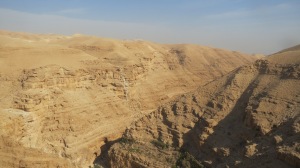
To mention the name brings hymns to mind, characters to mind, Old and New Testament figures and events. It’s a river that forms a modern political boundary between Jordan and Israel, a river that was a boundary in biblical Israel, a fording place for returning exiles, the place of baptism, the place of John the Baptist and Jesus.
The religious imagination works overtime as we imagine the Jordan and all it represents in the story of our faith. The African-American Spiritual ‘Deep River’ first mentioned in print in 1876, sung in the movie version of ‘Showboat’, made famous by Paul Robeson, is the archetypal expression of faith and hope connected to this river sung by people looking for their own exodus.
Deep river, my home is over Jordan,
Deep river, Lord, I want to cross over into campground.
Oh, don’t you want to go to that gospel feast,
That promised land where all is peace?
Oh don’t you want to go to that promised land,
That land where all is peace?
Deep river, my home is over Jordan,
Deep river, Lord, I want to cross over into campground.
So when you arrive at the Jordan River east of the ancient city of Jericho it can be a bit of a disappointment. The river is narrower than in the imagination, shallower, slower and dirtier. This can’t be the river that we have been talking and singing about! But it is!
The water extraction policies of both Israel and Jordan have removed a great deal of water which would naturally flow down the river and feed the now shrinking Dead Sea beyond. But to be honest it has never been an impressive river.
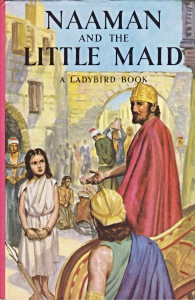
When I was a child I had a Ladybird Book called ‘Naaman and the Little Maid’. It told the story of Naaman. It was one of my Sunday School prizes. The story is told in 2 Kings 5. It begins by setting the scene
Naaman, commander of the army of the king of Aram, was a great man and in high favour with his master, because by him the Lord had given victory to Aram. (2 Kings 5.1)
His wife’s servant girl (the Little Maid of the Ladybird Book) was an Israelite who had been captured in a raid. She told her mistress that there was a prophet, Elisha, in Israel who could heal her Master. So Naaman gets permission to go and find the prophet and ask for healing. The Prophet asks him to bathe seven times in the Jordan. When Naaman hears this he’s furious.
Naaman became angry and went away, saying, ‘I thought that for me he would surely come out, and stand and call on the name of the Lord his God, and would wave his hand over the spot, and cure the leprosy! Are not Abana and Pharpar, the rivers of Damascus, better than all the waters of Israel? Could I not wash in them, and be clean?’ (2 Kings 5.11-12)
As we looked into the waters of the river today where we had come to renew our baptismal promises you knew what he meant. But in the end he was persuaded to do as the prophet said and was healed. We renewed our promises and some entered the water and were spiritually and physically refreshed.
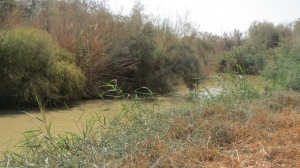
Not everything is as we sometimes imagine it to be and we can be disappointed when our religious imagination has run away with itself. But into this water Jesus entered and
‘a voice came from heaven, ‘You are my Son, the Beloved; with you I am well pleased.’ (Mark 1.11)
God can work through the dirty water of life even through the dirty and often disappointing water of my life and bring me, bring you, to the Promised Land and that perfect river that flows through the city.
Almighty God,
we thank you for our fellowship in the household of faith
with all who have been baptized in your name.
Keep us faithful to our baptism,
and so make us ready for that day
when the whole creation
shall be made perfect in your Son,
our Saviour Jesus Christ.
Amen.



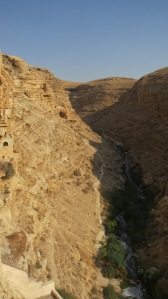
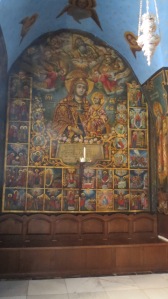
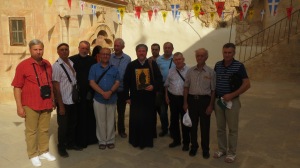

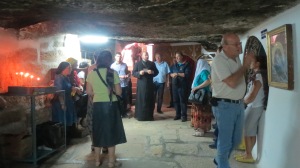


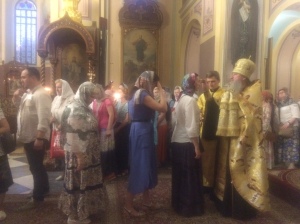
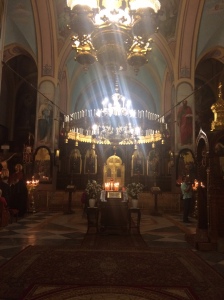

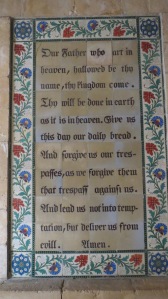
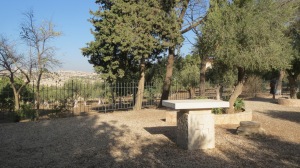

You must be logged in to post a comment.